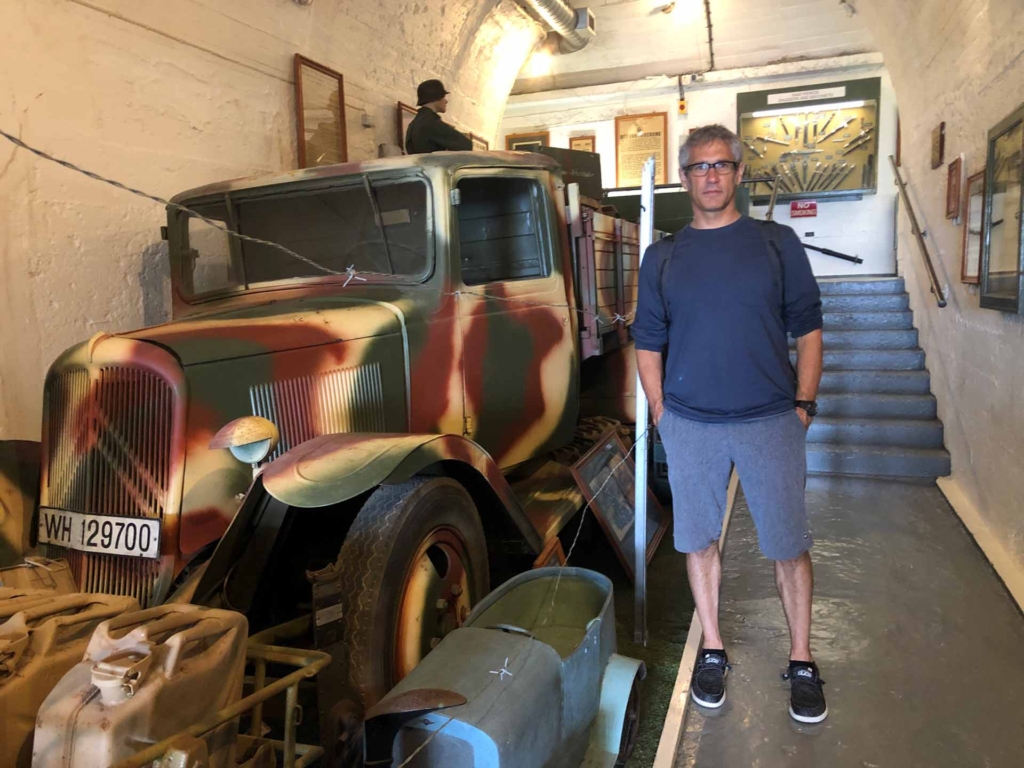
With a joint portfolio that covers blockbuster franchises Star Wars, Lord of the Rings, X Men, Kingsmen, Fantastic Beasts, Spiderman, MAD MAX, and just about EVerything in between, ART department kingpins Paul Campion & Mary Pike Take a time out from the big time to talk about making their Nazi-flavoured FESTIVAL Favourite
SPLENDOID: Paul, could you start us off. As director and co-writer, what was your inspiration for the initial idea?
PAUL CAMPION: I was in Guernsey visiting friends who live there. I had taken a taxi to the airport and was very early so the taxi driver offered to show me one of the fortifications which was close by. This turned out to be MP3, the observation tower at Pleinmont. I took a few pictures of it and thought it might be a good location to set a horror film.
I can’t remember if it was this same trip or a later one, but I was visiting for a screening of my short film Eel Girl (2008() at a small film festival on the island. There was write-up and interview with me in the local newspaper and one of the questions was whether I knew about Guernsey’s history of witchcraft. I didn’t, but that peaked my interest. My friend then sent me an article on the so-called ‘Bad Books’.
A bit of research and I put the fortification, the Bad Books, and Hitler’s obsession with the occult together to came up with the initial idea of German soldiers stationed there finding one of the Bad Book and using it to summon a demon. I then started research into Guernsey’s occupation during WW2 and learnt about the commando raids and tied that into the story. Then co-writer Paul Finch (who was already much more knowledgable about WW2 than I was) and I tied as many historical facts into the story as we could.
Did you have any particular objectives that you wanted to achieve with the film?
PC: It was my first feature as a director so I was just hoping I could get through the process and not get fired, and also make something that didn’t suck. Ideally the film would actually sell to distributors and entertain an audience enough to at least make it’s money back. We did set out to make a film which visually looked like a much bigger budget. I’m proud that everyone went the extra mile to pull that off.
That was what I really loved about the film; how the real locations and sets gelled together to bring a real sense of quality and craftmanship. I know that you were low budget but what was the final figure that you were working with?
PC: NZD$550k (appox £285k)
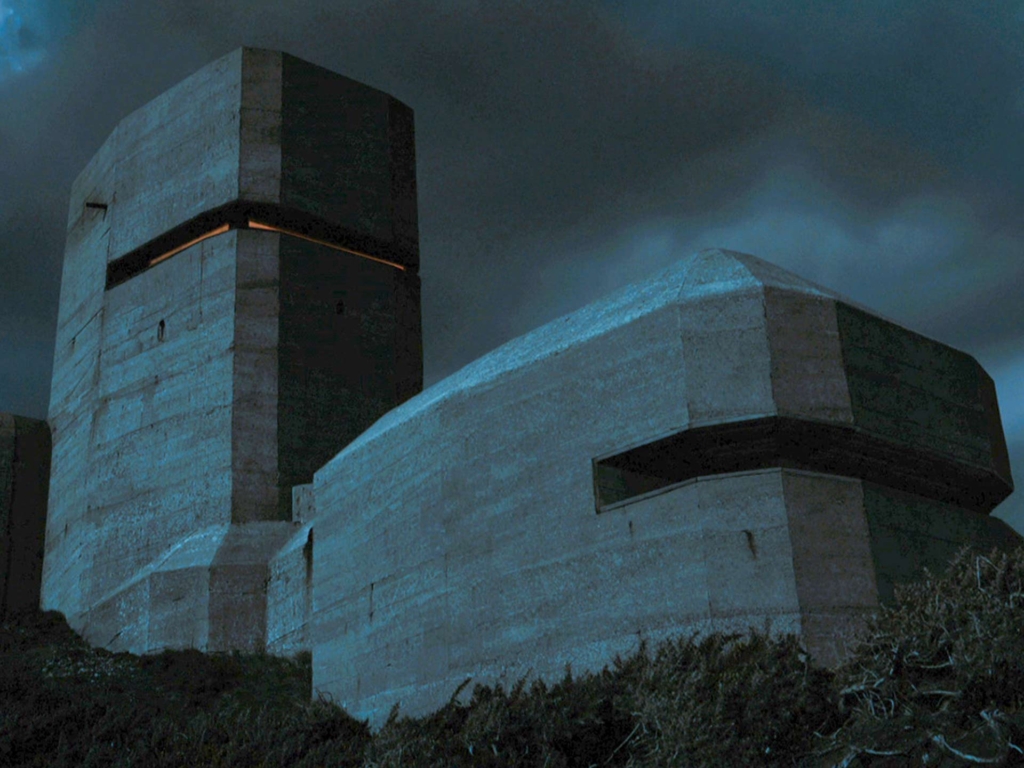
This seems like a good place to bring Mary in so, Mary, could you outline how you got involved?
MARY PIKE: I actually can’t remember the exact details, but I think that it was a friend of a friend who mentioned that Paul was looking for a designer for his short film, Eel Girl. We did that project together, filming in a studio at Weta Workshop. I was fortunate enough to be asked to stay on at Weta after we wrapped and joined the miniatures crew for Prince Caspian (2008). I was still working there when The Devil’s Rock came into being, so I just took some time out from Weta for filming.
PC: Mary did a such a fantastic job as production designer on Eel Girl, and I really enjoyed working with her, so she was the first person I approached when The Devils’ Rock started to happen.
I mentioned earlier that I felt that the film has a tremendous sense of craft, much of this comes from the attention to period detail. When I was watching it the first time, I felt that it was made by people with a real personal enthusiasm for 2nd World War 2 history – was I right in that thinking?
PC: Actually, nothing special prior to making it. I’ve always enjoyed war films and had a passing interest in WW2. I also found WW2 bunkers interesting to explore, but it was only after I started researching the film that my interest in the period really peaked.
MP: I studied European History at University prior to switching to Modelmaking and then Production Design. I knew a fair bit of WWII history which may have helped with getting aspects of the look right, but I wouldn’t say I had any specialist interest.
The Nazi’s were so incredibly evil they’re really an open book when it comes to portraying them in genre films, and Hitler’s obsession with the occult only adds to that
Paul campion
To continue with the historical side a bit longer, the Nazi obsession with the occult is nowadays very well known. There’s so many documentaries and fiction movies dealing with it that its practically a sub-genre, and one of them, Raiders of the Lost Ark (1981), is surely the undisputed classic. In both your opinions, what is it about this topic that makes it perfect for pop culture? Why do we public seem to love a good Nazi occult story despite knowing that the regime was real and, of course, totally despicable?
PC: The Nazi’s were so incredibly evil they’re really an open book when it comes to portraying them in genre films, and Hitler’s obsession with the occult only adds to that. However, I do feel there is a fine line when creating a work of fiction around historical fact. There is a responsibility to try and be respectful of those who lost their lives in the war.
MP: I always feel when you see the depiction of Nazi’s dabbling in the occult the audience automatically knows things are going to go badly wrong for them – maybe there is a pleasure in seeing such reviled figures meeting a grizzyl end?
Another thing that I loved about the film was that it reminded me a lot of movies from the golden age of the Hammer studios. Would you both agreea, and were you directly influenced by any of these films at all?
PC: Not specifically. I grew up watching Hammer Horror films, but I doubt I’ve watched any for decades now. All my research before making the film was contemporary horror filmmaking. My sensibilities are more classical style filmmaking though, so I can understand how that, and the combination of low budget, period setting, practical makeup effects, and the more theatrical three-handed nature of the story might make it comparible to a Hammer film.
MP: From my Production Design end, there were not really any direct influences other than having a very tight budget!
Naturally many WW2 films feature bunkers, but many end up creating their own versions which somehow always end up looking a little unconvincing – one specific example being Saving Private Ryan. What led to the decision to base yours on an actual location?
PC: As mentioned earlier, I had seen the Pleinmont observation tower and thought that a bunker would make a good setting for a horror film.
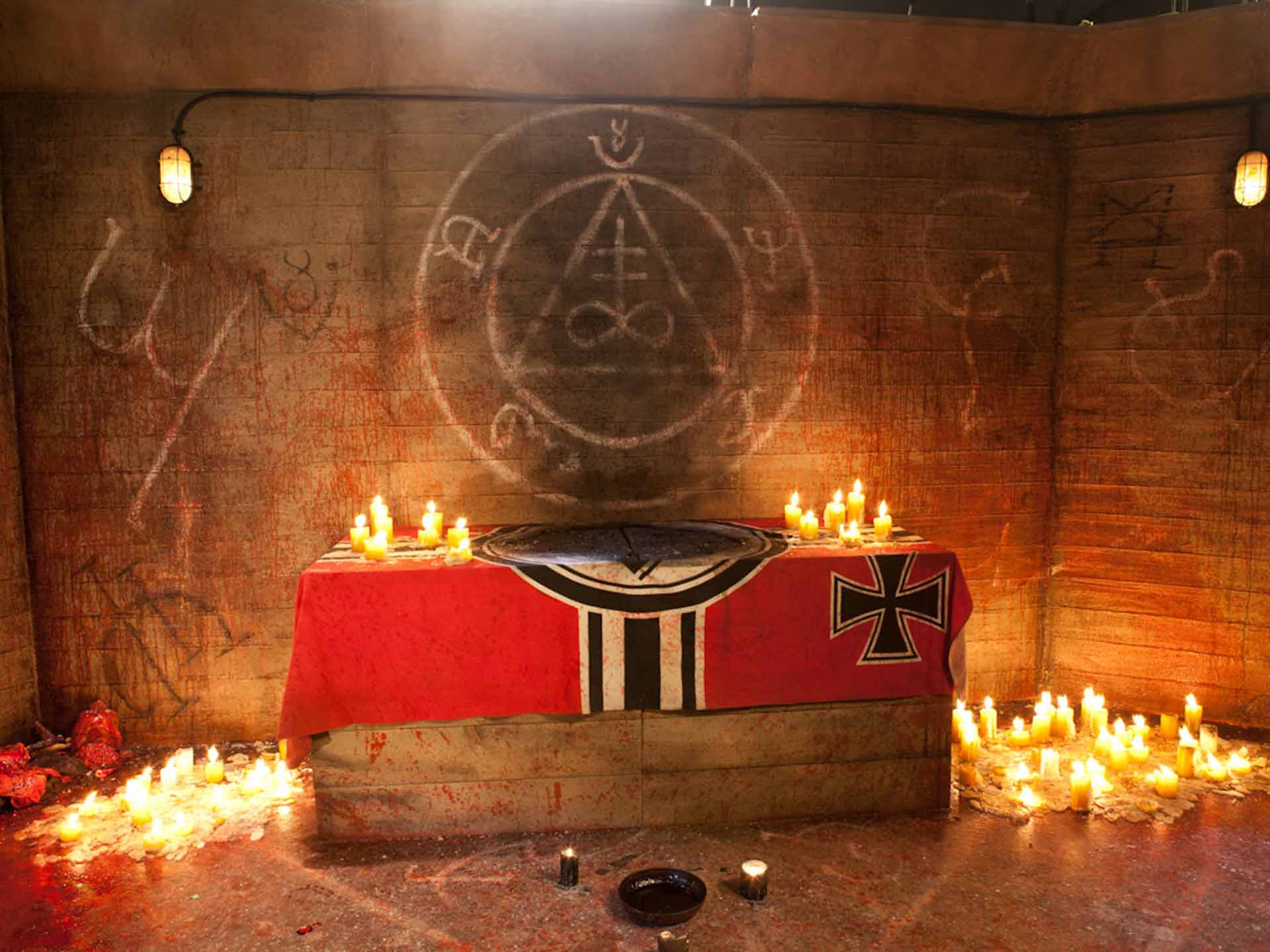

But, in the end, you used MP4, the observation tower at L’Angle. Now, there is a certain atmosphere at that bunker – it is on a very high cliff edge, and so has a real ‘edge of the world’ feeling, then there is its unique design, it really stands as the perfect example of the “Clenched Fist” aesthetic of its architects, the Organisation Todt. Going further there is the fact that the site has an unhappy history as a suicide location – for many years there was car wreck lying in the rocks at the bottom. Did any of these points come into play in your decision?
PC: Yes, I remember the car wreck was there when I first visited it. I just thought MP3 was a little more visually interesting than the typical round structures, both the design of the tower itself, and the dramatic position on the cliff top. Also, it felt like there was more opportunity to play around with the interior set design rather than get tied into the round rooms of the other structures.
You did alter the exterior – your version has less observation decks – and your interior floorplan also does not follow the actual building, for example your ‘mess room’ set is a lot larger than the rooms in the side wing of the tower. Was there anything specific that led to the decision to design your own version?
PC: That’s just down to artistic license. I did try and design a fictional structure, based on some of the designs from Alderney, but it just wasn’t as imposing as the real thing. The interior had to work for the film and how the story and scenes play out, as well as practically to allow as much space as possible for the crew and camera and lighting equipment. I do remember the first time Mary set up the walls for the crew room set and the Director of Photography Rob Marsh coming in, taking a look, and immediately asking her to make it bigger.
Did the fact that you clearly reference an actual place cause any problems for the production? I ask as when I created the emblem for the hero boat on the Das Boot (2016) TV series we had to design something that looked authentic but was not anywhere near an actual marking, as legal issues could have arisen.
PC: No, as the bunker was designed created by the Nazi’s, we weren’t worried about someone owning the visual rights to it.
And there weren’t any issues in the research stages with local organisations on the Channel islands? I was wondering whether because you were making a horror film there might have been the thought that you were making light of a serious topic?
Not at all. I met with some of the people from Festung Guernsey while I was doing research and they were really helpful. I think they might have been a little nervous at first given it was a film about demons and the occult, but from what I remember they were happy with the result and that we tried to be as respectful as possible with the historical details.
there was a bit of time to plan and design in advance, but the build was only maybe a week for the first set up
Mary Pike
How long was the research period vs. the construction period?
PC: It was very quick. I came up with the idea for the film in February 2010 and we were shooting in August that year. The research was ongoing during that time, but Mary only had about 3 weeks to design and construct and dress the first set.
MP: Yes, it was a pretty tight turnaround – I think there was a bit of time to plan and design in advance, but the build was only maybe a week for the first set up and then we did a re-dress essentially for the smaller second set which was maybe a couple of days at most while the location scenes were filmed (if I remember correctly?)
PC: Yes, I think you only had 3 days while we were on location at Wrights Hill Fortress and at Breaker Bay filming the beach scenes. Originally there was four days scheduled but our 1st AD Richard Matthews wanted to shoot the tunnel scenes in one day as it just wasn’t a pleasant environment to shoot in.
The result on film is a mix of CGI, mattes, practical sets, and actual locations. How many individual elements came together in the end?
PC: The tunnels and gun pit are real, Mary and her team built two sets – the crew room and the top observation room/alter room, then all the exterior shots of the fortification and some wide shots of the gun pit were matte paintings based on photos of MP3.
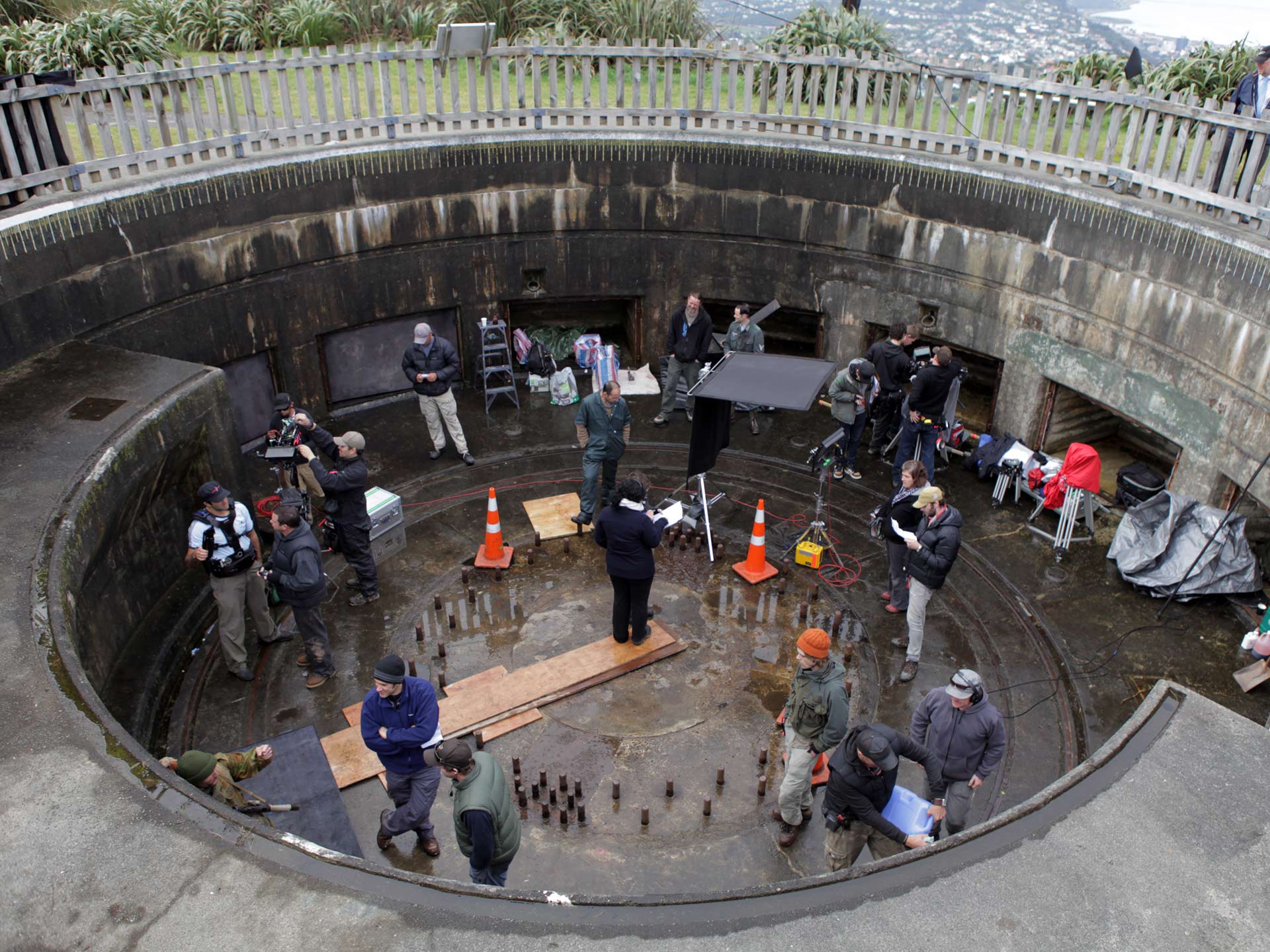
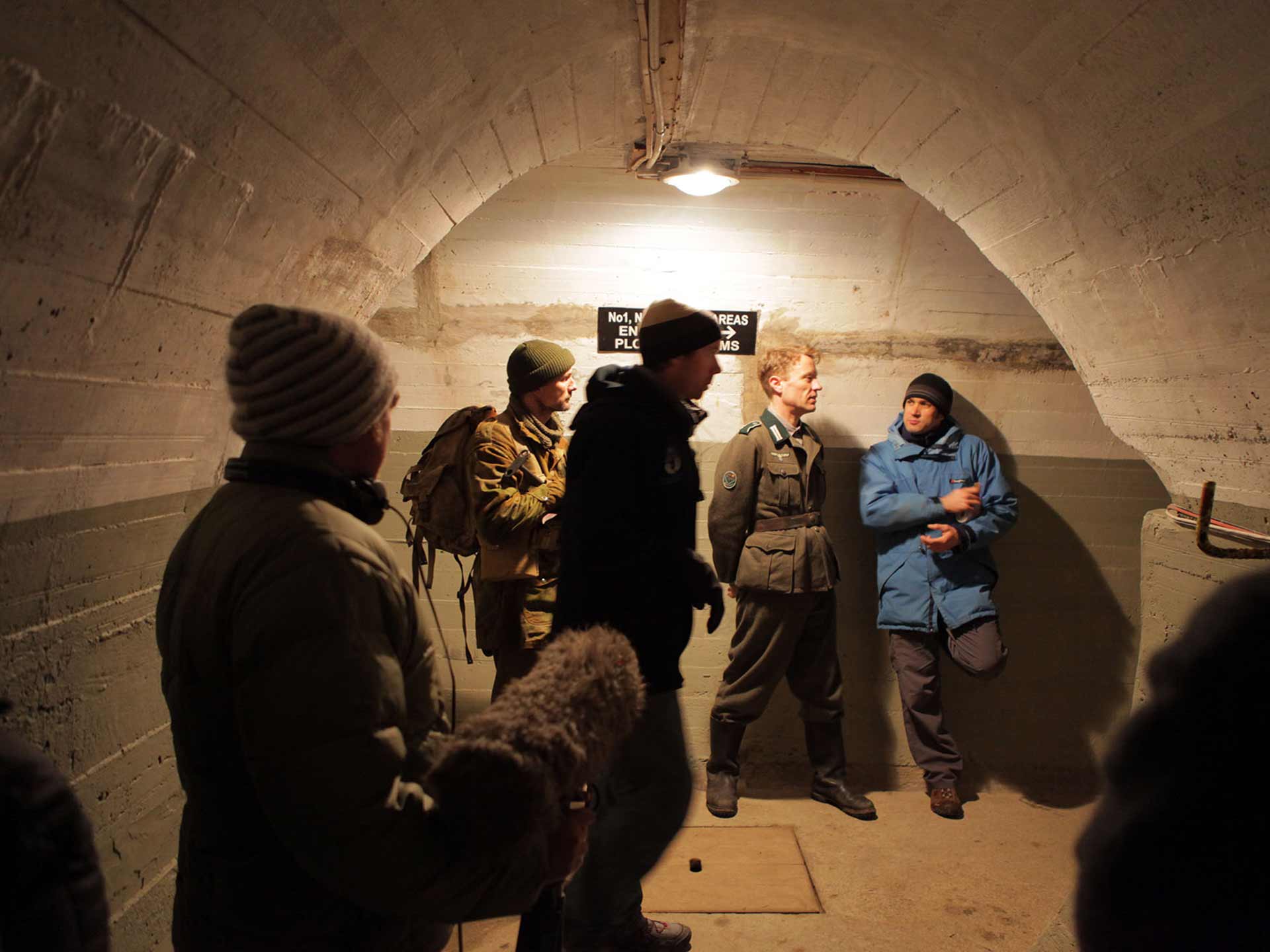
You used Wright’s Hill in Wellington as a practical location for the exterior gun pits. I was really surprised by this as I initially thought that you used Battery Mirus, a couple of huge gun pits that were built just down the road from L’Angle point. Were you aware that you had such a good match for the real thing locally or was it a happy accident that they fitted so well with the Atlantic Wall aesthetic?
PC: I wasn’t aware of them until some friends in Wellington suggested that they might make a good location for the film. It turned out to be a fantastic find as it’s a genuine WW2 bunker that has been partially restored. Also, it’s privately owned, which made getting permission a lot easier. OK, it’s not German-built but on our budget we had to make do with what we could find. And they added tremendous production value.
They certainly did. But being that they were Allied not German, did you have to do much dressing to make the site feel more ‘Third Reich’?
MP: We had some references of the interiors of German fortifications, so we worked from those really – I remember Paul painting a graphic on the wall when we were doing the final dress of some German text. We also got a few bits of dressing from various collectors etc, which were correct for the time and place.
On film the tunnels seem endless, are they really so lengthy, or is much of the effect on film due to clever camera positioning and editing?
PC: That’s all real. I think there are a couple of kilometers of tunnels in there, with only about one-third restored. I got lost down there at one point as a lot of the junctions are very similar, and it’s easy to lose your sense of direction. The rest of the unrestored tunnels disappear off into darkness and would also make a fantastic location for another horror film.
I felt that the interior sets were incredibly authentic, right down to the colour of the paint on the walls. Why did you decide to provide so much detail?
PC: I love period films and I’m a big fan of production design and ‘busy’ heavily art directed sets. I also wanted it to be as historically accurate as possible (within the budget we had). I know how particular some people can be about WW2 and I didn’t want to be criticised for just creating something that could have ended up as cheesy low budget approximation. That also extended to the costumes which were handled by Mary’s partner Tristan McCallum. He did a great job of putting together period accurate costumes and weapons, some of which were originals from WW2.
I love period films and I’m a big fan of production design and ‘busy’ heavily art directed sets
Paul campion
Mary, what resources were you able to gain access to in order to achieve this level of detail?
MP: Same as the above answer really – I think also Paul had collected a few things, and there were various people who collected memorabilia who we tapped into, as well as having a few things made specially. Wellington has a talented community of craftspeople working in an around the film industry, as you might imagine, so it’s a great place to make a small movie if you can find a window when people are available.
PC: I think I collected a lot of dressing for Eel Girl, but not for Devil’s Rock.
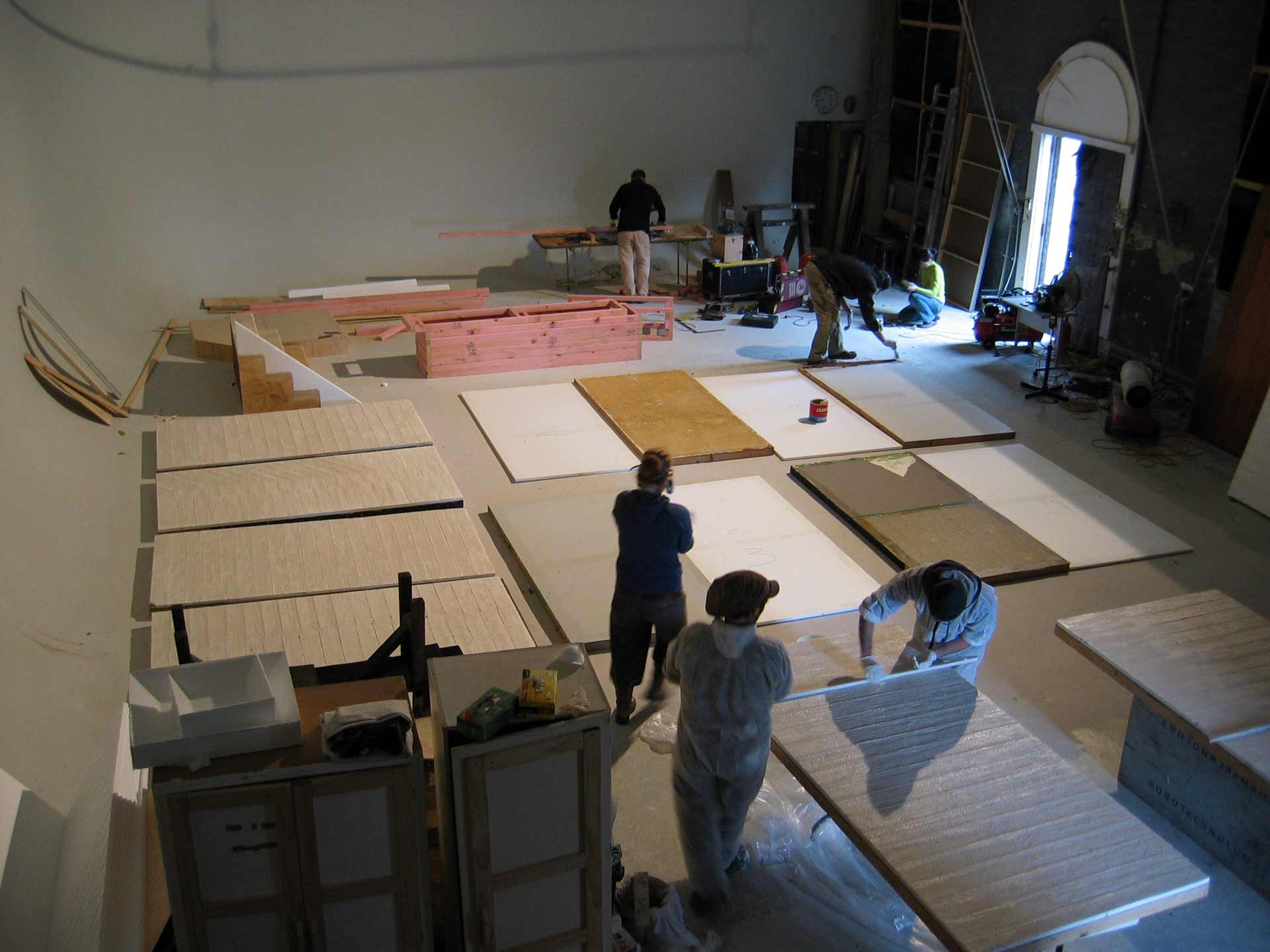
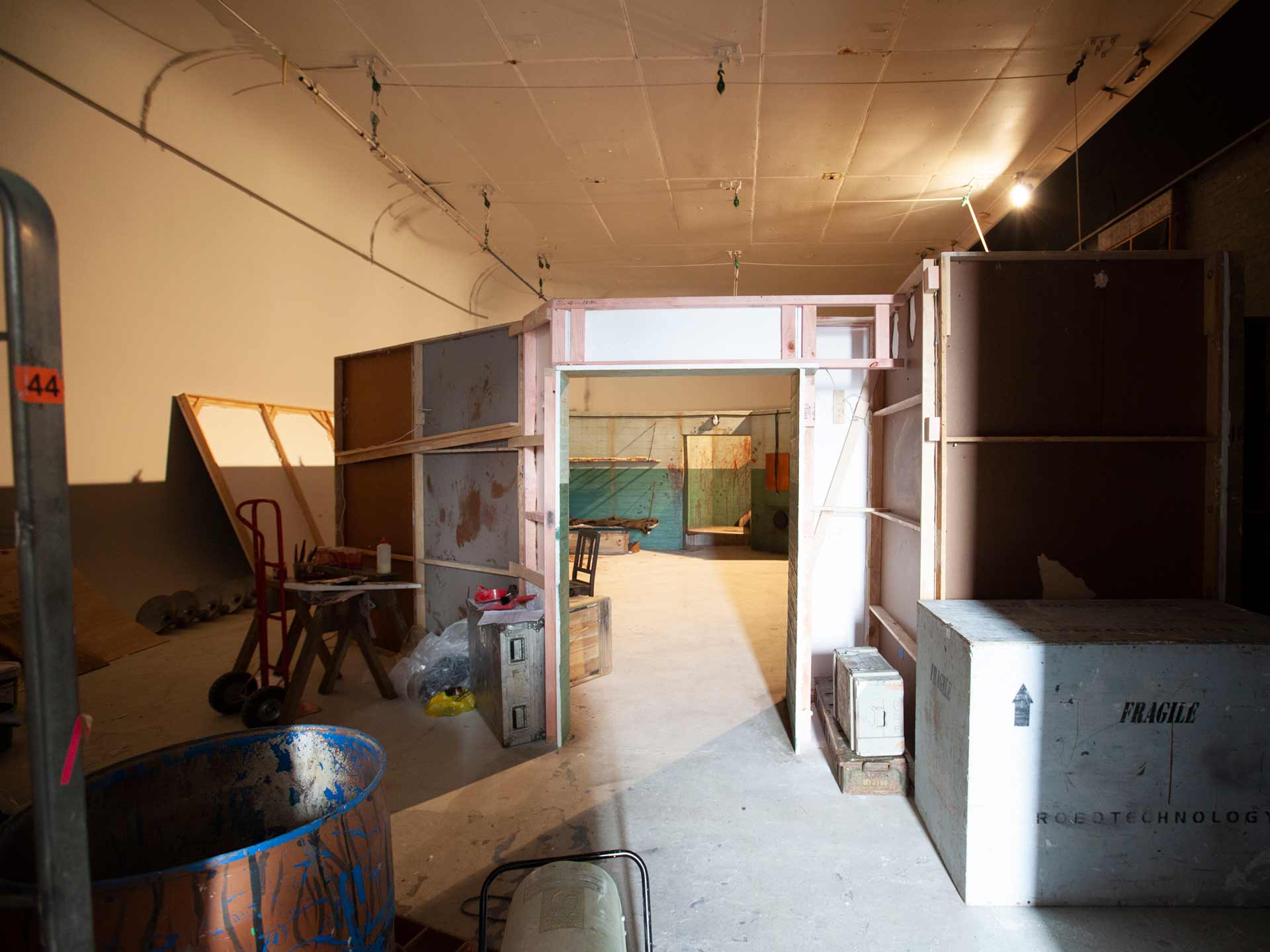
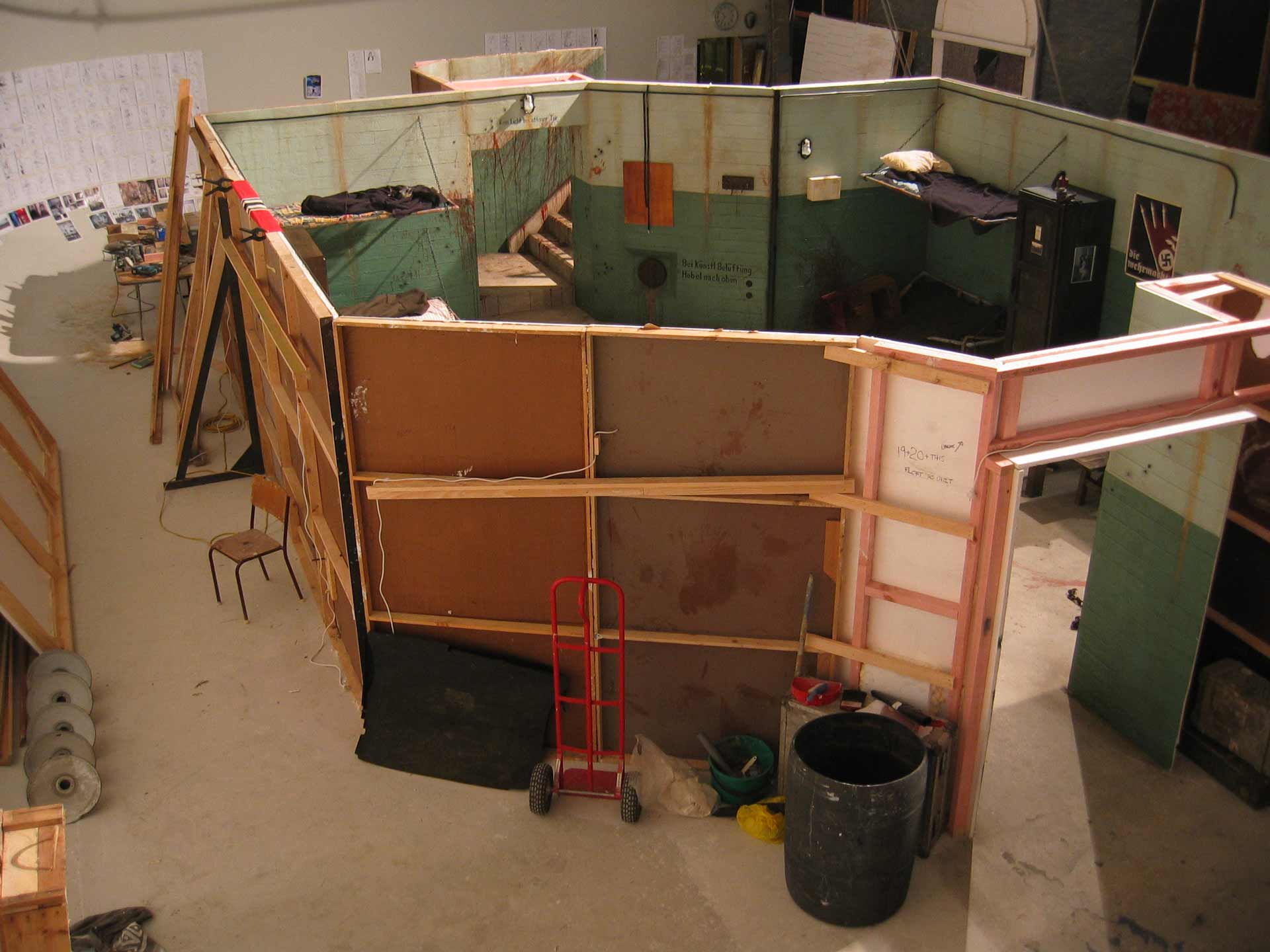
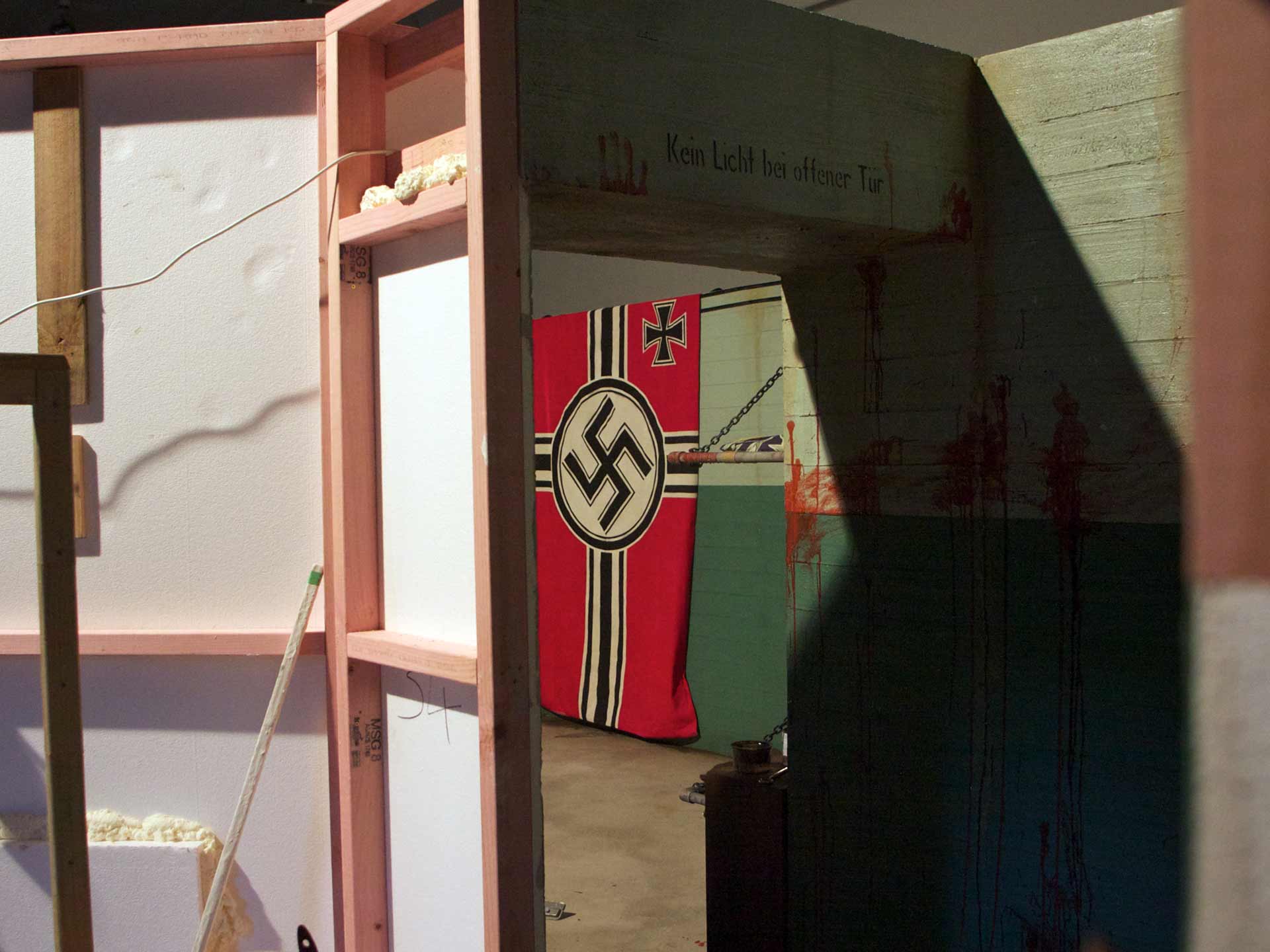
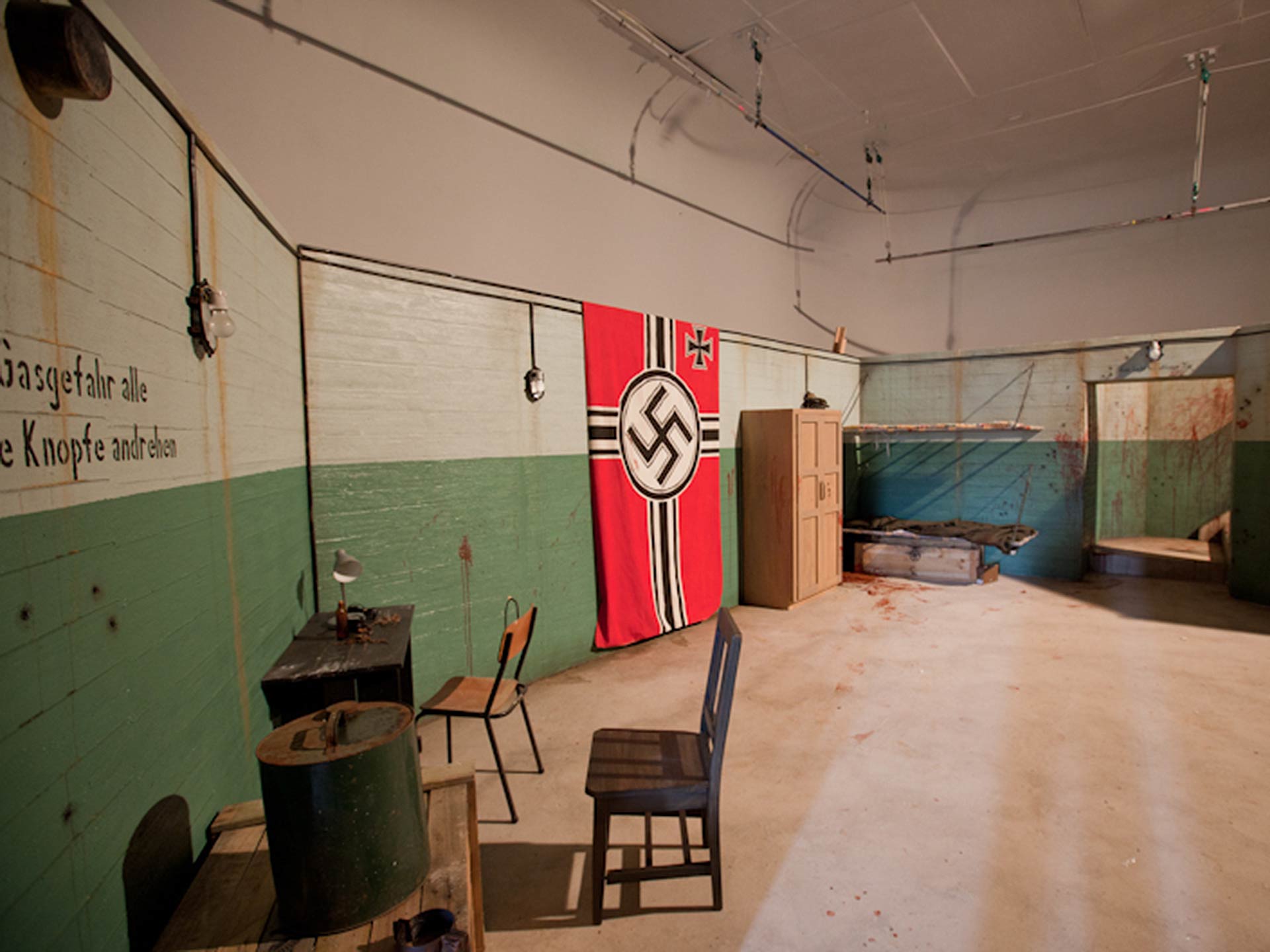
Were the final sets created as a full inhabitable environment or were they modular, meaning elements that could be rearranged and adapted for each camera set up?
PC: Mary originally designed them to have some fly-away walls, but we had so much lighting equipment positioned outside the walls, and the studio space wasn’t much bigger than the set, plus we were shooting in an incredibly tight 15 day schedule, so there just wasn’t time to start taking the set apart and putting it back together again. We ended up just shooting inside the set, so it was a 360 degree environment. There were two sets, the crew room and the obseration room/alter room where the demon is kept chained up. Because of the budget and size of the studio we could only afford to build one set, so Mary built the crew room first, then once we’d finished filming that we went and shot on location at Wrights Hill fortress and the beach for the few days. During that time Mary and her art department team only had 3 days to break the set down, reuse the walls and rebuild and repaint it to become the top observation room.
How were the sets constructed?
MP: We reused the standard flats at the studio and built some of our own custom ones where we needed to. We clad each flat in thin polystyrene sheet then screed it with plaster and pressed timber boards into the wet plaster to mimic the finish in the reference locations. It was a relatively simple and cheap process.
Our only restriction really was budget but there were plenty of favours called in
Mary pike
Could you provide an overview of the techniques that were utilized to finish the interiors to such a high degree?
MP: Paul had done a lot of research and fantastic concept art so I think the rest of the processes that followed were fairly standard and we were just fortunate to have highly skilled crew coming from Weta and other film departments that were able to do a brilliant job on props/ set painting/ make up etc that was just as good as what they could provide for a big budget movie. Our only restriction really was budget but there were plenty of favours called in, as there always are on these types of projects, and plenty of ingenuity used to get the best possible results with what we had.
You arrived at such a quirky film, were there any funny stories or experiences during the making?
PC: During filming at Wright’s Hill, we had the NZ Armed Offenders Squad turn up because someone walking their dog had reported there were men walking around with guns – even though they were in WW2 period costume and there was a full professional film crew with them.
Always fun what the public think, isn’t it! Thank you so much for the insights, it’s been a real pleasure to talk to you. A bit of fun to finish, and to bring us full circle – did you know that a museum housed in a U Boat tunnel complex in St Peter Port has one of the famous trucks from Raiders of the Lost Ark on display?
PC: I didn’t, but I’m going to visit my friends in Guernsey again this year, I’ll definitely check it out!
